Hey @Uniquely Genius what do you see Diana doing as a profession as since she won't be Princess if Wales ITTL? With JFK Jr. An actor I wonder what Diana would do? I feel like I've asked this before but I can't remember
Last edited:
I was thinking that Diana Spencer ITTL would be great as a humanatarian and activist, like working for charities, non-government organizations, fighting for the protection of children, even being vocal about Eating Disorders, breaking the stigma on AIDS, giving knowledge on Mental Health, supporting the LGBT+ Community, and she might even be as a Goodwill Ambassador for UNICEF like Audrey Hepburn. With her causes and advocacy IOTL, this is what would I think of her ITTL. Maybe with JFK, Jr., they can be both as Goodwill Ambassadors for UNICEF, he might remember what his father and uncles did during their times in office on helping and uplifting the lives of people for a better tomorrow.Hey @Uniquely Genius, what do you see Diana Spencer doing as her profession since she won't be Princess of Wales ITTL? With JFK, Jr. going to be an actor, I wonder what Diana Spencer would do? I feel like I've asked this before but I can't remember.
Those would be great for her and with the Kennedy family behind her and a loving husband by her side she will definitely flourish. I can just imagine her and RFK just having conversations about how they could help people with HIV. Depending on when she and JFK Jr. Meet and start dating.I was thinking that Diana Spencer ITTL would be great as a humanatarian and activist, like working for charities, non-government organizations, fighting for the protection of children, even being vocal about Eating Disorders, breaking the stigma on AIDS, giving knowledge on Mental Health, supporting the LGBT+ Community, and she might even be as a Goodwill Ambassador for UNICEF like Audrey Hepburn. With her causes and advocacy IOTL, this is what would I think of her ITTL. Maybe with JFK, JR., they can be both as a Goodwill Ambassadors for UNICEF, he might remember what his father and uncles did during their times in office on helping and uplifting the lives of people for a better tomorrow.
That is if the author writes it that way. But I'm really hoping he does, Diana I think could really shine as part of the Kennedy family and after what she went through IOTL she deserves happinessMan its gonna be so wild reading about Diana Spencer as part of the Kennedy family. Camelot now have the "people's princess" except they won't know what happens in OTL.
All good points, I like that point you made at the end with Mayor Daly. I think at the end of the day even RFK would admit Daly was not exactly a stand up guy. History will not remember those Polanski apologist well, especially when the "So-Have I" campaign picks up steam in the 80s, it's gonna expose a lot of the dark underbelly of Hollywood and a lot of these apologist are not gonna be able to cover up the fact that there are a lot of predatory men in hollywood. Hopefully with that 80s romcoms are much better handled than they were IOTL.More social stuff:
1.) Even today there's a lot of violent pushback if a woman accuses a man of abuse (Jonathan Majors, Marilyn Manson, and in my own opinion Johnny Depp). I definitely think that when Geimer accused Polanski there was a lot of casual slut shaming at the time, and that when Marilyn intervened on her behalf there would have also accusations that they're "feminazis" trying to slander a "brilliant artist".
Shirley Temple I think would be a game changer, and even then people might try to go "okay MAYBE she was abused but that doesn't make Polanski guilty."
His being found guilty would be a MAJOR game changer; people who supported him would be shocked, and in some cases angered. I can see other women starting to come forwards.
2.) It's been pointed out that a lot of Rom Coms in the 80s were VERY sexist and rapey. I can see more people commenting on this at the time. The comic industry might also see more of that (Mike Carlin was apparently always a sleazy creep) being addressed as well.
3.) I've mentioned Jon Burge: Burge is probably the blackest mark on the CPD's record and pretty much the most extensive example of dirty policing I can imagine. He tortured hundreds of people into confessing (some guilty others not.....let's put it this way. One of the reasons that Illinois abolished capital punishment was because 12 of the people on death row were tortured into confessing by this guy and his goons). They're still paying off all the lawsuits from wrongfully convicted people, and a lot of people he tortured are still in jail.
Burge's downfall ultimately started when the PLO (People's Law Office) took the case of Andrew Wilson. Wilson was a very clear cut piece of shit (he let another man serve 25 years for a murder he committed and was guilty of multiple other murders, including a cop), but he WAS tortured. While his lawyers were investigating a whistleblower in the office anonymously contacted them and told them to look for a man named Melvin Jones. They found Jones, and Jones gave VERY similar stories to Wilson despite having never met him. They found others, and that's when the allegations of torture started to be more widespread.
I've mentioned Madison Hobley as well: Long story short, Hobley was an idiot who cheated on his wife and then made ill advised threats after she learned it. A fire broke out and Hobley's wife, son and five others died in the blaze.
There's a lot of reason to believe Hobley was innocent of the murder.
1.) First off, the state's expert initially agreed that the fire started on the ground floor, and only changed it AFTER Hobley was charged. A highly qualified expert also agreed the fire started on the ground floor.
2.) Hobley's confession was physically impossible; he supposedly threw the gas can into the room....yet it was found under a locked kitchen sink.
3.) The can presented at trial not only failed to match the two witnesses description (the can was a one gallon can, the witnesses described a two gallon can), it also didn't have any burn marks or signs of being in an inferno.
4.) When a special prosecutor investigated, their own investigator concluded that there was medical evidence to back up his claims of torture (he claimed that the police jammed their thumb in his adam's apple, kicked him in the shins, overly tightened the handcuffs, and punched him in the chest; according to medical records he had a swollen adam's apple and bruises on his chest, and that this was proof that THOSE parts of the story were almost certainly true).
5.) There's no written record of Hobley actually confessing; some of the officers actually said he DIDN'T confess, and one of the officers who claimed he did said that her accidentally spilled liquid all over his notes and had to get rid of them. Another officer was incredibly vague (saying only that Hobley "made admissions").
6.) Records indicated that there were actually TWO cans recovered. When the defence asked to test the second can it was destroyed by the same guy who initially ruled that the fire started on the ground floor.
7.) Turns out that one of the two witnesses implicating Hobley (Andre Council) was part of a gang that used arson as an intimidation tactic.....and they'd just been forced out of the building Hobley was living in. He was also implicated in at least two other VERY similar fires, and Burge went to unusual lengths to protect him (he turned himself in for vandalism; Burge, despite not being in vandalism, pulled rank and released him without making him get his fingerprints taken.) The other witness, Kenneth Stewart, admitted that he was scared shitless of Council and never actually identified Hobley as the man he saw.
Long story short, it's likely the building was burned down as part of a gang war; the police zeroed in on Hobley and manufactured a confession when he didn't break. Soon afterwards they realized that their star witness was the one who probably set the fire, but by this point they'd already manufactured a confession and couldn't come clean (they also openly hated black people. According to Hobley one of the officers said "ain't nothing but ****ers died in that fire.")
While Burge was never charged for the torture Hobley's lawsuit ultimately resulted in Burge going down for lying, which resulted in him spending four years in jail.
If Burge has a more extensive downfall I think a similar case (someone wrongfully convicted) ultimately pulls back the web of lies enough for Burge's crimes to be exposed beyond a shadow of a doubt. Hobley was a lot more sympathetic then most of the people Burge tortured in that his only crime was cheating on his wife.
Essentially, I think that there should be a VERY high profile conviction due to Burge (the person is accused of a truly ghastly crime and convicted); ultimately in either the late 80s or early 90s an investigation not only proves the person innocent (hey, maybe DNA testing is involved), but also proves that Burge went far beyond mere torture to get the conviction (maybe even burying evidence pointing to the actual perpetrator to conceal that he manufactured a confession). This ultimately causes a more detailed investigation from the FBI that exposes both his crimes and the extensive lengths that the Cook County DA's office went to conceal them. Since Mayor Daly (one of the guys who signed off on Burge's crimes as DA) was part of the Democratic Machine I can actually see a Republican President signing off on it just to give the Democratic Machine a bloody nose.
It's always possible.Honestly, I hope Christina Haag ends up a bigger star ITTL after reading that.
@President_Lincoln Thanks for this! The future seems much better for both charles and diana! Very happy for the future king!
Lovely update concerning alternate Charles and Diana relationships. Both will do extremely well, I'm sure.
Fair point. Hope Charles and Amanda get to have a fairly large family! Recomendation for the name of the heir: still william. The 1000 anniversary of the battle of hastings and William the conqueror's coronation is just too tempting!Thank you both!Glad you enjoyed. I believe both will likely lead happier lives here than they did IOTL. Then again, it's tough to make choices for yourself when you constantly feel the pressure of a public spotlight. I look forward to covering everything that both couples get up to in the future as we move forward.
JFK III has a nice ring to itFor JFK Junior and Diana, can see one of their children being named for either one of his parents.
I loved this chapter! I am so glad that Charles is marrying Amanda she definitely seems like a much better match for him than Diana (Through no real fault of her own) I must say Mountbatten you matchmaking devil! They will definitely make a great team. I just hope Amanda will still be able to help the downtrodden from her position. Ah yes I must say I thought for a second that JFk Jr. and Christina were gonna get married but as they say young love doesn't last and I was a little bit sad from it. It really seemed like they were a good match but as they young love sometimes doesn't last.Chapter 145 - Every Little Thing She Does is Magic - Love & Courtship Amongst RoyaltyAbove: Prince Charles on the cover of Time Magazine in 1980 (left); Lord Mountbatten, who celebrated his 80th birthday on June 25th, 1980 (center); Lady Amanda Knatchbull, 23 years old in 1980 (right).
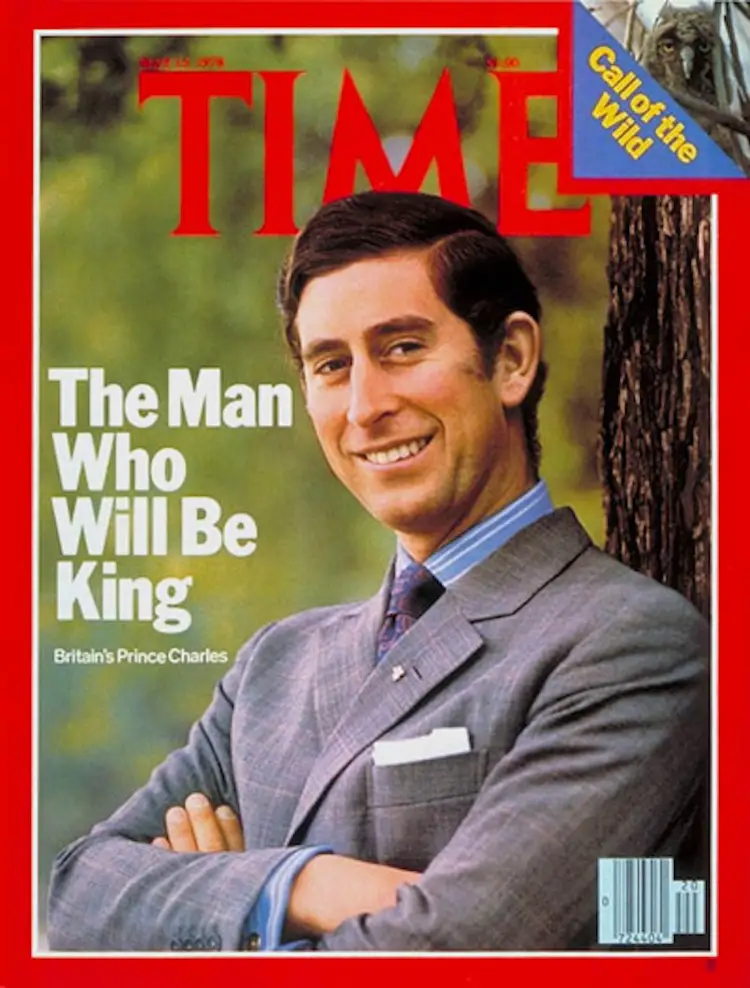
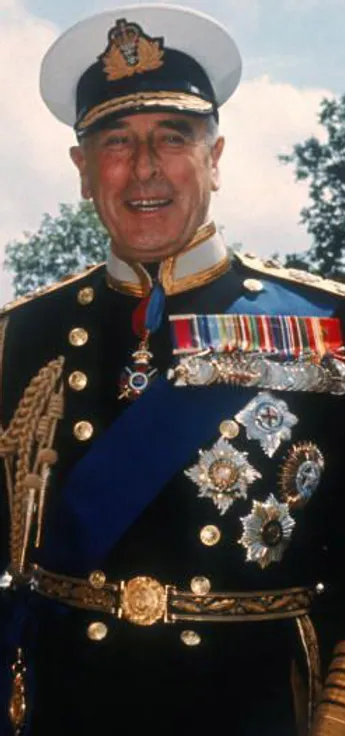
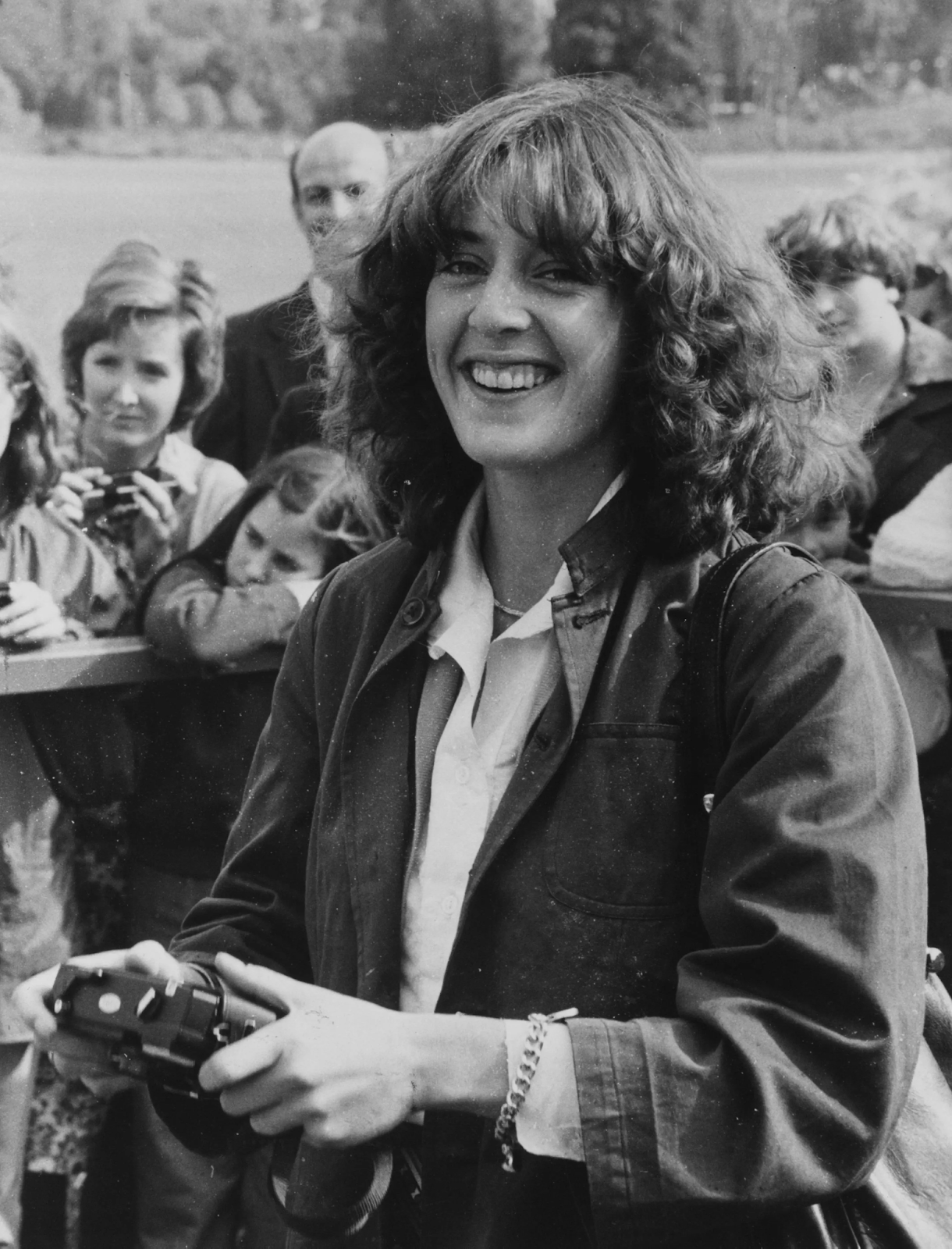
“Every little thing she does is magic
Everything she do just turns me on
Even though my life before was tragic
Now I know my love for her goes on” - “Every Little Thing She Does is Magic” by the Police
“My mother said, ‘Don't worry about what people think now. Think about whether your children and grandchildren will think you've done well.’” - Lord Mountbatten
“I learned the way a monkey learns: by watching its parents.” - Prince Charles, on his introduction to Royal life.
In November of 1980, His Royal Highness the Prince of Wales, Charles was scheduled to tour India as a gesture of goodwill across the Commonwealth. In Britain, preparations were hurriedly made for the trip. One issue that came up during preparations, however, was who exactly would comprise the Royal entourage.
Lord Mountbatten, the Prince’s great-uncle and “Honorary Grandfather”, obtained an invitation to accompany his grand-nephew. Mountbatten, 80 years old in 1980, was a strong influence in the upbringing and later mentorship of his great-nephew. From time to time, he scolded the young prince for showing certain tendencies toward the idle, pleasure-seeking dilettante lifestyle of his predecessor as Prince of Wales, King Edward VIII, whom Mountbatten had known well in his youth. That said, he simultaneously encouraged Charles to enjoy the bachelor life while he could, and then to marry a young, “inexperienced” girl, in his words, “so as to ensure a stable married life”, fit for a future King.
Mountbatten had a unique set of qualifications for offering advice to this particular heir to the throne: he had played matchmaker, once upon a time, for Charles’ parents - Queen Elizabeth II and Prince Phillip. It was Mountbatten who had arranged the visit of King George VI and Queen Elizabeth to Dartmouth Royal Naval College on July 22nd, 1939, taking care to include the young Princesses Elizabeth and Margaret in the invitation, but assigning his nephew, Cadet Prince Philip of Greece, to keep them amused while their parents toured the facility. This was the first recorded meeting of Charles's future parents.
The rest, as they say, is history.
Beginning in 1974, Lord Mountbatten began a correspondence with Charles in which he nudged the prince toward a potential future marriage to Mountbatten’s granddaughter, Amanda Knatchbull. Miss Knatchbull was also Charles’ second cousin. Charles wrote to Amanda’s mother (who was also his godmother and his father’s first cousin), Lady Brabourne, about his interest. Her answer was supportive, though she advised the prince that she felt her daughter - sixteen at the time - was then too young to be courted. Charles was twenty-five at the time. Mountbatten was undeterred by this, however. He advised his grandnephew to be “patient” and to “take this time to sow [your] wild oats”.
Charles took this advice to heart. Over the next five years, he was romantically linked to numerous women, including: Georgiana Russell, daughter of the British ambassador to Spain; Lady Jane Wellesley, daughter of the 8th Duke of Wellington; Davina Sheffield; and a number of others. He enjoyed each of these relationships, but remained aloof from the idea of marriage. By the summer of 1980, as plans were being made for his tour of India, Charles was single once again.
Sensing that perhaps now the time was right to pursue his second-generation matchmaking scheme, Lord Mountbatten arranged for himself and Lady Amanda to accompany Charles to India.
Immediately, both Amanda’s and Charles’ fathers protested. Prince Phillip feared that his famous uncle - Lord Mountbatten - would eclipse Charles on the tour, defeating the preparatory purpose of the trip. Lord Brabourne, meanwhile, warned that a joint visit would concentrate media attention on the cousins before they could decide on becoming a couple. The pressure might ruin the potential match before it could even begin.
To circumvent this issue, Lord Mountbatten proposed that Charles and Amanda holiday with him in the Bahamas first, to see how they liked each other’s company away from the pressures of the tour. The various family members acquiesced. The holiday commenced.
Charles and Amanda were a bit awkward around each other at first. Amanda was well aware of her grandfather’s ambition. Her mother never formally told her of Prince Charles’ interest in courting her, but Amanda wasn’t foolish. During their initial interactions, she remained polite, but aloof. For his part, Charles did his best to make the trip a pleasant one. Between games of polo with other vacationers and wind sailing, he made an effort to get to know his second cousin. He asked her about her interests, about what she valued, what she believed in.
Amanda, though only just turned twenty-three, had already earned a Bachelor’s degree from the University of Kent, a CQSW qualification from Goldsmiths College, London, and a Certificate in Mandarin Language from the Beijing Language Institute. The last of these opened up a connection between the second cousins. Charles was a firm believer in understanding the voices and perspectives of indigenous peoples, and even made an effort to learn some of their languages. She also told him that she longed for a career in social work, to work with vulnerable people, especially children.
Charles admired this. He studied at Cambridge (among other institutions) and served in the Royal Navy and Air Force. Earning his wings enabled him to take Amanda for a fly-by over the islands while on their holiday. Amanda would later relate this as “the moment she began to warm up to him”.
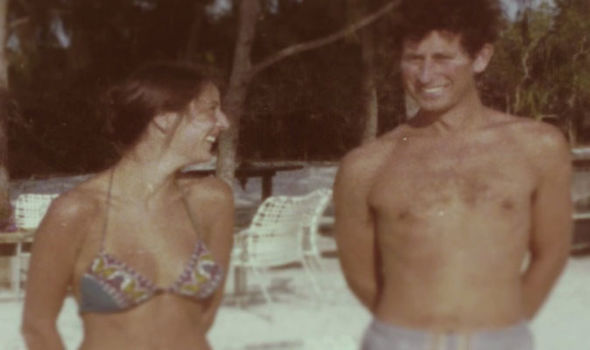
Above: Amanda Knatchbull and her second cousin, Charles, Prince of Wales, on holiday in the Bahamas - July 1980.
Over the next week, the pair spent a great deal of time together. They painted watercolors (another passion of Charles’), swam, and otherwise enjoyed one another’s company. By the time they prepared to return to London, the pair were ready to “announce” that they were a couple. Lord Mountbatten was thrilled, of course. Lord Brabourne agreed to give Amanda his blessing to accompany Charles to India. Prince Phillip remained unmoved toward his uncle. He still feared that Charles would be outshone. But he eventually relented. Both Amanda and her grandfather would go to India alongside the Prince of Wales.
The journey to India was marked by a sense of celebration between the British royal family and the Indian subcontinent. The trio's arrival in Delhi was met with great anticipation and warmth, as they were greeted by Indian officials and dignitaries - including Indira Gandhi, once again prime minister - eager to strengthen the ties between the two nations. At a banquet he hosted in Delhi on the opening night of the tour, Prince Charles delighted his guests by delivering toasts in both Hindi and Urdu. Amanda’s admiration and affection for her second cousin grew.
The royal trio's itinerary for the tour included visits to iconic sites such as the Taj Mahal, discussions with political leaders, and engagements with local communities. Lord Mountbatten's firsthand accounts of India's struggle for independence and the subsequent formation of two sovereign nations added a personal touch to the historical narrative. In general, the presence of Lord Mountbatten added a special dimension to the trip. His deep connection to India, stemming from his time as the last Viceroy and the first Governor-General, resonated with the Indian people. Though perhaps he did, at times, outshine his grandnephew as Prince Phillip had feared he would, Mountbatten also offered Charles a great deal of advice and helped the young heir to forge diplomatic relationships and represent the United Kingdom well. Amanda, for her part, also played a crucial role in bridging cultural gaps and fostering understanding. She was especially interested in trying to encourage the Indians to seek a rapprochement with the People’s Republic of China, though she spoke only in generalities of “peace” and “cooperation”, so as not to disrupt the tradition of the Royal Family remaining outside of politics.
The visit came to represent reconciliation and cooperation between Britain and India. Media coverage of the tour emphasized the positive aspects of the two countries’ relationship, showcasing the cultural exchange, economic partnerships, and educational collaborations that were being discussed and forged. The tour contributed to a broader narrative of global cooperation, peace, and understanding, especially with India becoming a close partner of the UK and her allies in the fight against global communism. It was also a throwback to earlier tours of the Commonwealth by the British Royal Family, reminding the British public of the pride they held in their traditions.
The media also loved Charles and Amanda, whom they described as “making a rather handsome couple”. The two grew closer still throughout their time on the subcontinent. By the tour’s conclusion, on New Year’s Eve 1980, Charles felt confident enough in their relationship to propose. Amanda, to everyone’s surprise, including her own, agreed. The Commonwealth (and of course, Lord Mountbatten) rejoiced. A wedding date was set for July of the following year.
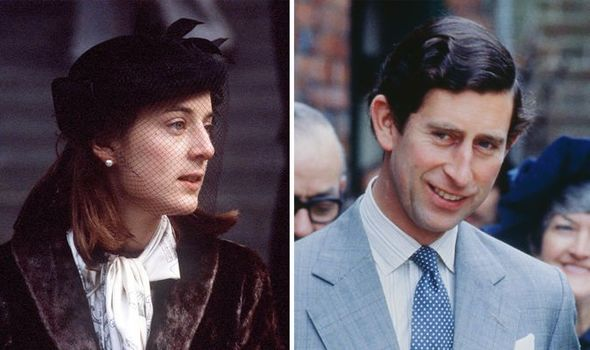
…
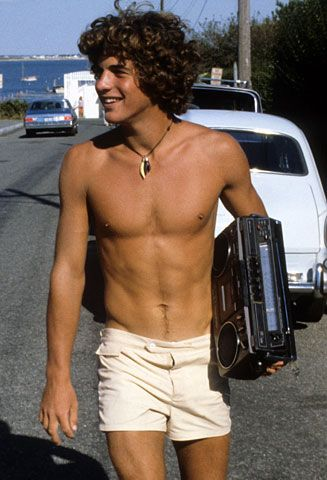
While his older sister, Caroline, seemed all too eager to step into the family business - law and politics - John F. Kennedy, Jr. was less certain about what his future would hold.
The boy his parents affectionately called “John John” attended various private schools in New York City and across New England throughout his youth. Ultimately, he finished his secondary education at Phillips Academy in Andover, Massachusetts, graduating in 1978.
Even as an adolescent, however, Kennedy showed signs of leadership, undoubtedly inherited from and encouraged by his famous parents.
In 1976, Kennedy’s secret service protection (as the child of a former president) came to a close. He and his cousin visited an earthquake disaster zone at Rabinal in Guatemala, helping with heavy building work and distributing food. The local priest said that they “ate what the people of Rabinal ate and dressed in Guatemalan clothes and slept in tents like most of the earthquake victims,” adding that the two “did more for their country's image” in Guatemala “than a roomful of ambassadors”. Two years later, after graduating, he accompanied his mother, former First Lady Jackie Kennedy, on a trip to Africa. He rescued his group while on a pioneering course, which had gotten lost for two days without food or water. That summer, he worked as a wrangler at a ranch in Wyoming. When asked by his fellow cowboys why he’d taken the job, he replied simply, “I want to know what it’s like to work hard to earn a living”.
JFK Jr. made his first public speech in March of 1980, introducing his uncle Bob at a campaign rally in Providence, Rhode Island. At the time, John Jr. was a sophomore at Brown University, where he studied American Studies and Theater. While at Brown, Kennedy co-founded a student discussion group that focused on contemporary issues such as apartheid in South Africa, gun control, and civil rights. Visiting South Africa during a summer break, he was appalled by apartheid, and arranged for then U.N. ambassador Andrew Young to speak about the topic at Brown. Kennedy fit right into the student body at Brown, often renowned for their iconoclastic views and sympathy for the counterculture. It was also at Brown that Kennedy first began to consider what he wanted to do with his life.
While in college, Kennedy began appearing in a series of plays, both as coursework for his theater program, and as an extracurricular activity. His professors and directors praised him as a “natural”, with “an earnestness that just shines through in his performances”. An object of public attention and fascination since he was born, Kennedy found that acting was like second nature to him. He was accustomed to playing various roles, after all. He began to express interest in acting as a career, much to the chagrin of his mother. The former First Lady, still somewhat bitter of the “Hollywood influences” on her husband in the past (especially Marilyn Monroe), found acting an “unsuitable” profession for her son.
Countering the influence of Jackie, however, was that of John’s childhood friend and later, girlfriend, Christina Haag. Haag, herself an aspiring actress, had grown up in Manhattan, and been a playmate of John Jr., whom she described as a “lanky, quiet kid with a big smile”. The two moved in and out of each other’s social circle throughout the teenage years, as they attended varying prep schools. All that time, Haag held what she believed to be an unrequited love for Kennedy. Years later, when they attended Brown together, she discovered that the feeling was, in fact, mutual.
Fitting for any storybook romance involving a prince, the truth about their mutual affection came out while they were performing in a play together. The two spent more and more time together during and after rehearsals until, one day, they practiced their characters’ first kiss for the first time and… sparks flew between them. That night, Kennedy confessed his own feelings to Haag. Shortly thereafter, they started dating.
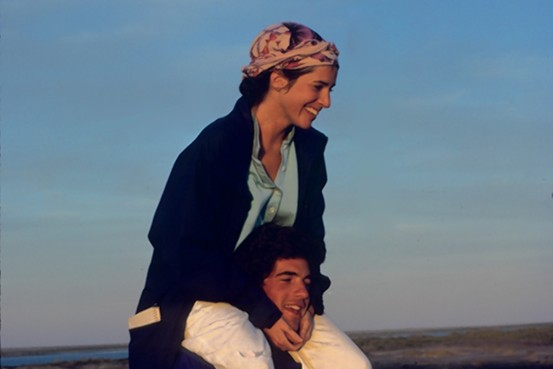
Christina would later recall the first time that John brought her home to the Kennedy Compound to meet his parents, for Thanksgiving in 1980. It was, in her words, “totally surreal”.
For one thing, the Kennedy clan was even more jubilant than usual. John’s uncle, Robert F. Kennedy had just been elected president. He and the soon to be First Lady brought their entire family home to Hyannis Port to celebrate. For another, Christina detected the various personalities at play within the Kennedy Family, and learned to gauge their reactions to her as an outsider.
The cousins, both older and younger, were generally friendly to her. As were John’s elder sister Caroline and younger siblings, Robert called “Robbie”, and Rose Mary (“Rosie”). They joked around and swapped stories, same as any kids their age. Christina remembered feeling “relieved” at the time that none of the cousins seemed to judge her and John Jr. for smoking pot. John’s aunts and uncles were cordial, especially his Aunts Eunice and Jean. Uncle Bob - the President-Elect of the United States - was quiet and thoughtful, as was his wont. Uncle Ted and his wife, former movie star Sharon Tate Kennedy, were both very supportive of John and Christina’s ambition to act, and quietly lobbied JFK and Jackie to accept their son’s wishes.
Slowly, over the course of the long weekend in Hyannis Port, Jackie warmed up to John’s girlfriend. Though she would never approve of John’s dreams of becoming a movie star, she did bless their relationship. John’s father, Jack, was every bit as charming as Christina imagined he would be. Even in his old age, she said, meeting the former President was like “opening a bottle of champagne”. John Jr. took Christina sailing on the family’s boats, surfing, and even scuba diving. They had great fun together. They experienced the perfect joy that can only come from a first love.
Alas, as Shakespeare himself once wrote, “the course of true love never did run smooth”.
Shortly before they both graduated from Brown in 1983, John and Christina split up. The couple later explained to the press that the reason for their breakup was simply the fact that “they were young”.
Christina struggled with the public attention and scrutiny that came with dating “America’s prince”. Kennedy, all too aware of his father’s reputation as a womanizer, was eager to settle down and prove that he could be devoted to just one person. But this proved difficult when their chosen field - acting - required so much moving around and kept them both so busy. Thus, Kennedy remained unsure if he truly wanted to act at all.
After their breakup, Kennedy dated or was linked to numerous women: socialite and child star Brooke Shields; model Cindy Crawford; and even actress Sarah Jessica Parker. Despite all these high-profile romances, however, John was never as happy with any of these people as he’d been with Christina.
Above: Christina Haag and John F. Kennedy, Jr. on January 20th, 1981, attending an inaugural ball in honor of Kennedy’s uncle, President Robert F. Kennedy. The couple would, unfortunately, break up just a few years later.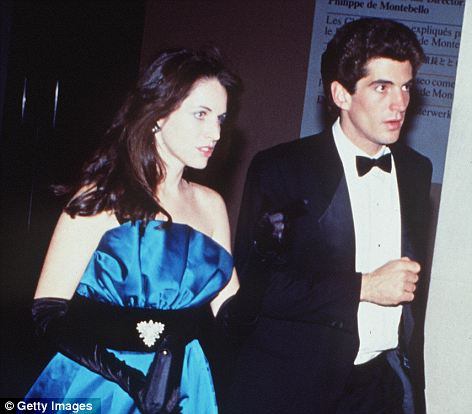
Meanwhile, across the Pond, another young lady was coming of age herself. Though she couldn’t have known it at the time, her fate would be forever linked to “America’s Prince”.
…
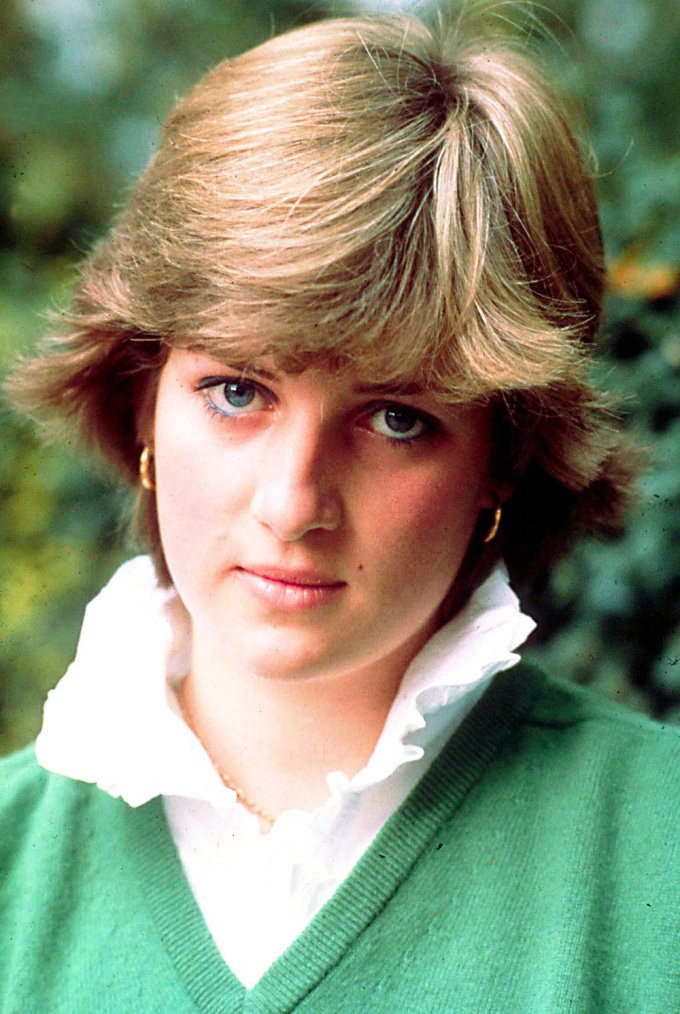
Above: Lady Diana Spencer, circa 1980.
Diana Frances Spencer was born on July 1st, 1961, the fourth of five children of John Spencer, Viscount Althorp (1924 - 1992), and Frances Spencer, Viscountess Althorp (née Roche; 1936 - 2004). For several generations, the Spencers had been closely allied with the Royal House of Windsor; her grandmothers, Cynthia Spencer, Countess Spencer, and Ruth Roche, Baroness Fermoy, had served as ladies-in-waiting to Queen Elizabeth The Queen Mother. Growing up, Lady Diana would call Queen Elizabeth II, “Aunt Lilibet”; the Spencers even rented Park House, where Diana grew up from the Queen regnant. Due to young Diana’s “duchess” like attitude, which she displayed from a very young age, her parents nicknamed her “Duch”.
Unfortunately, Lady Diana’s childhood was not always an entirely happy one. Her parents, desperate for an heir, felt a great deal of strain added to their marriage when three of their first four - Sarah, Jane, and Diana - (a boy, John, died while in infancy) were all daughters. Though they would eventually have a healthy boy - Charles - the experience proved too much for the Spencers’ marriage to bear. They divorced in 1968, when Diana was just seven. Her mother later began a relationship with Peter Shand Kydd and married him the following year.
Diana lived with her mother in London during her parents' separation in 1967, but during that year's Christmas holidays, Lord Althorp refused to let his daughter return to London with Lady Althorp. Shortly afterwards, he won custody of Diana with support from his former mother-in-law, Lady Fermoy. In 1976, Lord Althorp married Raine, Countess of Dartmouth. Diana's relationship with her stepmother was particularly dreadful. She resented Raine, whom she called a “bully”. On one occasion, Diana became so angry with her stepmother that she pushed her down a flight of stairs. She became known as Lady Diana after her father later inherited the title of Earl Spencer in 1975, at which point her father moved the entire family from Park House to Althorp, the Spencer seat in Northamptonshire.
Diana was initially home-schooled under the supervision of her governess, Gertrude Allen. She began her formal education at Silfield Private School in King's Lynn, Norfolk, and moved to Riddlesworth Hall School, an all-girls boarding school near Thetford, when she was nine. She joined her sisters at West Heath Girls' School in Sevenoaks, Kent, in 1973. But no matter where she attended, Diana did not succeed academically. She failed her O-levels twice, much to the consternation of her father.
Despite her lack of success at school, Diana was clearly gifted in other ways. Her teachers praised her for her “high-mindedness” and “community spirit”. Despite her early childhood shyness, as a teenager she opened up and became quite popular. She excelled at swimming and diving, studied ballet and tap dance, and became an accomplished pianist. Around this time, she also began to work a series of low-paying jobs as a nanny, a dance instructor, and as a pre-school assistant. Forgoing her aristocratic upbringing (which she claimed had brought her nothing but instability and pain), she chose a simple life with friends at a flat in Earl’s Court, Kensington, London. Granted, her mother had bought the flat for her as a birthday present and Diana allowed her friends to live there for free. But still, it was about as close as Diana was likely to get to a “common life”.
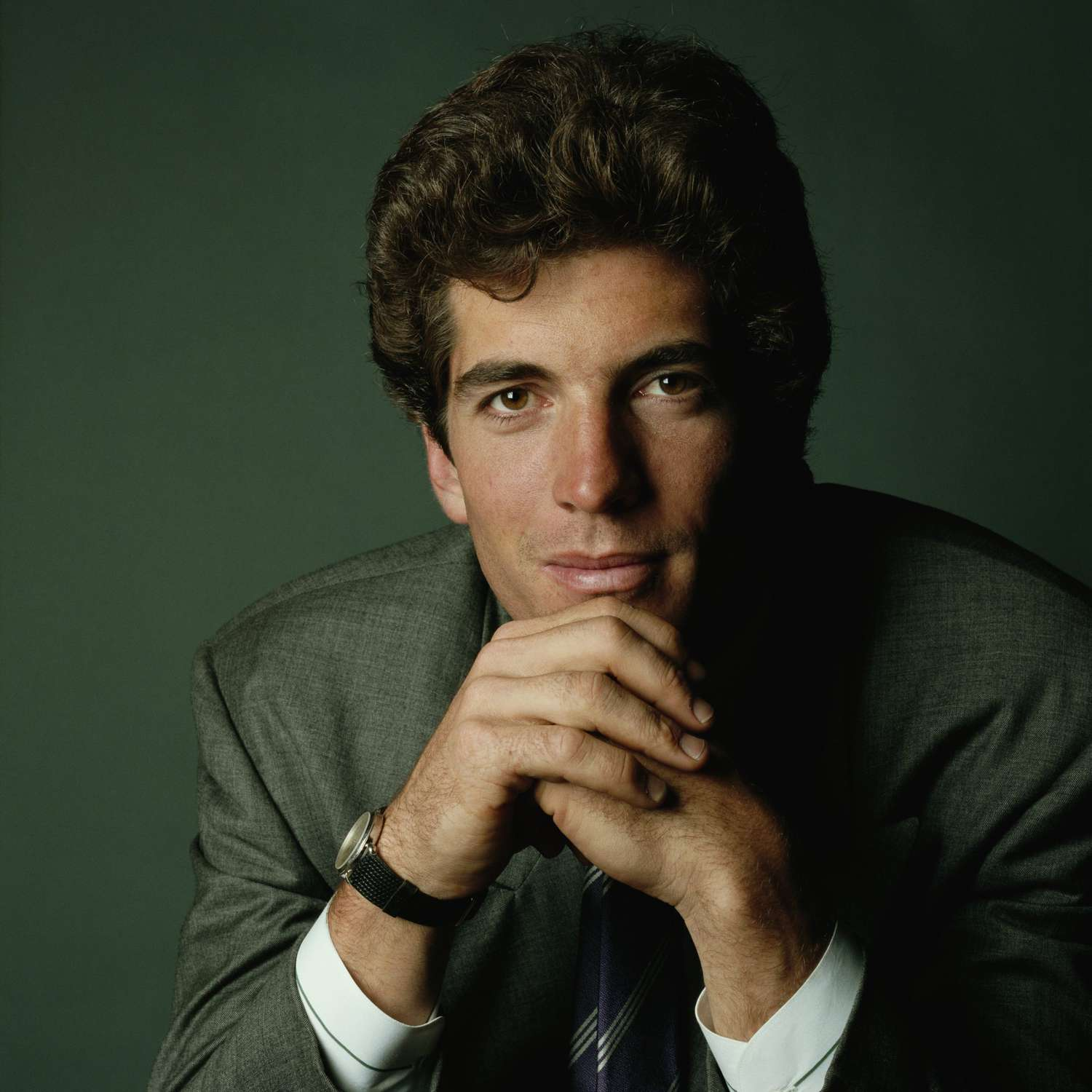
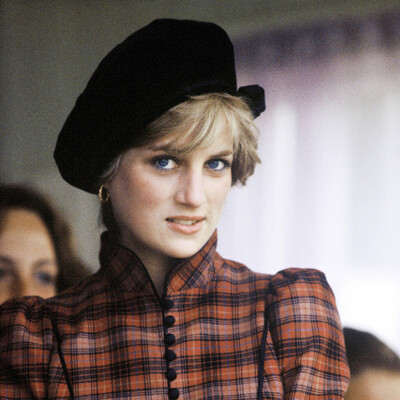
Above: John F. Kennedy, Jr. (left); Lady Diana Spencer (right).
Diana first met JFK, Jr. at the Royal wedding between Prince Charles and Lady Amanda Knatchbull on July 29th, 1981. Kennedy attended the event alongside his mother, former First Lady Jackie Kenendy and his then-girlfriend Christina Haag. His father, the former President Kennedy, was unable to attend due to concerns over his failing health, but he sent his warmest regards to the happy couple and made it plain that Jr. and Jackie were there to represent him (and America as a whole, really) in his stead.
The two danced with one another several times throughout the night, with the press in particular noting how “stunning” Kennedy (21) and Spencer (20) looked together. Tabloids on both sides of the Atlantic even posed lurid questions about whether or not the two engaged in… well, anything more than dancing, given Kennedy’s father’s reputation. But by all accounts, JFK, Jr. was nothing but a consummate gentleman.
“He represented his country well.” Lady Diana would later recall.
Though both were in relationships (of varying seriousness, in Diana’s case) with other people at the time, Kennedy and Spencer agreed to remain in touch after their magical night at the Royal wedding. This took the form of annual Christmas cards and occasional telephone calls. Often, Kennedy felt that Spencer was one of the few people who could really understand and therefore, help him cope with the tremendous pressure that the public spotlight put on someone. For her part, Spencer appreciated Kennedy’s perspective on being from a famous family. The Kennedys were, after all, probably the closest thing that the United States had to nobility. They bonded quickly.
For the next two years, their contact continued in this form until the summer of 1983. Following his breakup with Christina, “John John” wrote to Lady Diana, and asked if she would be willing to spend some time with him, if he should happen to “pop over” to London. She agreed. Shortly after, the two began dating. It seemed that many of those press reactions about the apparent chemistry between the two young socialites were accurate.
Next Time on Blue Skies in Camelot: Transition & Inauguration
Exactly why I recommend itJFK III has a nice ring to it
I hope they have a large family too but I mean 3 kids would make me happy. Would be glad to see them have at least 4 but that's just me, we shall see. That is too tempting, I agreeFair point. Hope Charles and Amanda get to have a fairly large family! Recomendation for the name of the heir: still william. The 1000 anniversary of the battle of hastings and William the conqueror's coronation is just too tempting!